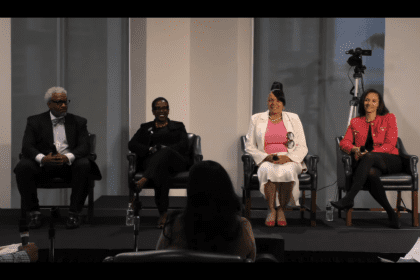The growing challenge of after-work communication
The digital dilemma
In an era where smartphones keep us perpetually connected, an increasing number of professionals find themselves experiencing a peculiar form of exhaustion when the workday ends. The notification chime of an incoming text message or the appearance of a voice note—communications that should theoretically bring pleasure—instead trigger a sense of dread and resistance.
This phenomenon, increasingly recognized as “digital fatigue,” represents more than mere laziness. It’s a psychological response to communication overload that affects young professionals disproportionately, creating a cycle of avoidance and guilt that can damage personal relationships and contribute to anxiety.
Recent workplace surveys indicate that approximately 65% of young professionals report feeling mentally drained after completing their regular work hours, with over half admitting they sometimes delay responding to personal messages for days because of this exhaustion.
Understanding the cognitive load of communication
The science behind the struggle
After hours spent in meetings, managing email correspondence, and navigating workplace chat platforms, the brain reaches a state of decision fatigue. This cognitive depletion makes even simple tasks like responding to a friend’s message feel surprisingly taxing.
The mental exertion required to craft thoughtful responses doesn’t disappear just because the conversation shifts from professional to personal contexts. The same neural pathways that become exhausted during workday communications continue to bear the burden when personal messages demand attention.
When facing stress throughout the day, the body’s sympathetic nervous system activates, triggering physiological responses designed for survival rather than social engagement. This heightened state creates a biological barrier to casual communication, as the body redirects energy toward perceived threats rather than social connection.
The amplification effect of digital expectations
When immediacy becomes overwhelming
Digital communication platforms have fundamentally altered expectations around response times. What was once considered a reasonable delay between receiving and responding to correspondence has compressed dramatically, creating implicit pressure to remain continuously available.
This always-on expectation collides with the very real need for mental recovery time, particularly for individuals whose professional responsibilities already include substantial communication demands. When personal messages arrive in the same digital spaces where work stress accumulates, the boundaries between professional obligation and personal engagement blur significantly.
For many, the problem compounds when notifications accumulate. A single unanswered message might seem manageable, but as the count rises, psychological avoidance intensifies. What begins as temporary reluctance can transform into communication paralysis, where the backlog itself becomes too overwhelming to address.
Identifying personal triggers and patterns
Recognizing your digital breaking point
Digital fatigue manifests differently across individuals and circumstances. Some people find text-based communication particularly draining while managing voice messages with relative ease. Others might handle one-on-one conversations comfortably but experience overwhelm when navigating group chats.
Workplace intensity directly correlates with after-hours communication capacity. Days filled with high-stakes decisions, conflict resolution, or intensive collaborative problem-solving typically leave fewer mental resources available for personal digital engagement.
Understanding your personal patterns provides valuable insight about when to protect your energy and how to structure your communication habits. The monitoring of these patterns reveals predictable cycles that can inform more sustainable approaches to staying connected while preserving mental wellbeing.
Strategic approaches to managing digital overwhelm
Reclaiming control of your communication
Implementing structured response windows—specific times designated for catching up on personal messages—transforms an open-ended obligation into a defined task with clear boundaries. This approach acknowledges both the importance of connection and the reality of limited mental resources.
Notification management represents another powerful intervention. Selectively muting conversations, disabling notifications during recovery periods, or utilizing focus modes can create protective barriers around restoration time without completely disconnecting.
Shifting communication modalities often proves surprisingly effective. When text feels overwhelming, a brief voice message might require less mental formulation. Similarly, a five-minute phone call can sometimes resolve what might otherwise become an extended text exchange requiring multiple decision points.
Physical reset activities between work and personal communication create a transitional buffer that helps the nervous system shift states. Brief meditation, short walks, or simple breathing exercises signal to the body that the vigilance required for work can now relax.
Timeboxing responses—setting a specific, limited duration for addressing messages—prevents communication from expanding to fill unlimited time. This technique acknowledges that perfectionism in personal correspondence often creates unnecessary pressure.
Communicating boundaries effectively
Honesty as a relationship tool
The anxiety surrounding delayed responses often stems from fear of disappointing others or appearing disinterested. However, transparent communication about capacity limitations typically strengthens rather than damages relationships.
Simple acknowledgments that signal reception without requiring immediate full engagement maintain connection while creating space for recovery. A brief note indicating you’ve seen the message and will respond when you have more mental bandwidth prevents misunderstandings while honoring your needs.
Established relationship patterns may require recalibration through direct conversation. Explaining personal needs around digital communication represents an act of trust rather than rejection, inviting deeper understanding between friends, family and partners.
Finding sustainable digital balance
The path toward healthier digital engagement involves recognizing that meaningful connection requires mental presence that simply isn’t available when cognitive resources are depleted. By implementing strategic boundaries and communicating needs clearly, individuals can preserve both their wellbeing and their important relationships.
Digital communication offers unprecedented convenience and connection potential, but maximizing these benefits requires intentional management. The goal isn’t disconnection but rather engagement that respects psychological limitations while nurturing important relationships.
As workplace demands on attention continue intensifying, developing these skills becomes increasingly essential. The individuals and organizations that thrive will be those who recognize that sustainable communication practices represent not luxury but necessity in navigating our hyper-connected world.














